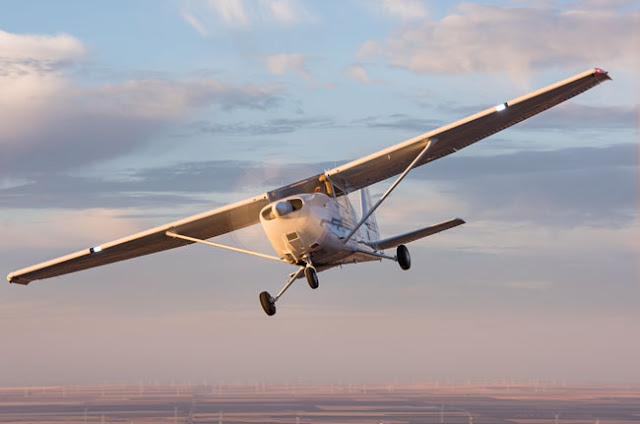Soaring Through the Digital Skies: Using Microsoft Flight Simulator to Save Money
Soaring Through the Digital Skies: Using Microsoft Flight Simulator to Save Money & Develop Flying Skills | |||||||||||||||||||||||||||||||||||||||||||
Microsoft Flight Simulator, a renowned flight simulation program, offers an unparalleled opportunity for aviation enthusiasts and aspiring pilots to develop and hone their flying skills. With its advanced realism and high-quality graphics, the software provides an immersive and educational platform for users to experience the thrill and challenges of aviation. In this essay, we will explore how Microsoft Flight Simulator can be effectively utilized as a tool to develop and enhance flying skills and get ahead of your instrument flight training (IFR) rating curriculum, whether you are a novice or an experienced pilot looking to sharpen your abilities. | |||||||||||||||||||||||||||||||||||||||||||
 | |||||||||||||||||||||||||||||||||||||||||||
Ultra-Realistic Flight Environment Microsoft Flight Simulator's commitment to realism is one of its most compelling features. The software offers a highly detailed and immersive environment, which mirrors real-world flying conditions. It simulates a vast range of aircraft, weather patterns, and terrains, allowing users to experience the challenges and intricacies of flying. As a result, it is an invaluable tool for developing an understanding of aircraft handling and navigation within a lifelike environment. The realism could be aided by utilizing aftermarket physical aircraft control systems, such as yokes, joysticks, power-quadrants, Oculus VR headsets, haptic devises, and so on. Familiarization with Aircraft Systems One of the primary steps in developing flying skills is becoming familiar with aircraft systems. Microsoft Flight Simulator provides detailed, true-to-life cockpit representations and interactive controls, enabling users to learn about various aircraft systems, such as avionics, engine management, autopilot, and communication equipment. This hands-on experience contributes significantly to developing an in-depth understanding of aircraft operations. “Aircraft Systems” is an important subject at the PPL, CPL, CFI and ATPL exams. Getting ahead and learning all you can about them will become a huge help in the future. Navigation and Flight Planning Navigation and flight planning are crucial aspects of aviation. Microsoft Flight Simulator offers a comprehensive set of tools to plan routes, waypoints, and instrument flight procedures. Users can practice real-world navigation techniques, including VOR, GPS, and ILS approaches. This virtual experience translates into enhanced proficiency in reading charts, understanding airspace, and conducting precise navigation. Just think about it: it takes approximately 30 minutes to fly a full instrument approach in a real aircraft. At a rate of $200-$300 per flight hour, including instructor, you will only be able to practice two approaches per hour, at a cost of $100-$150 per approach. In your home FTP, you will be able to practice an unlimited number of approaches at a cost of only a few pennies per approach in electric bills. So, why not use it before your actual flight lesson? Adverse Weather Scenarios Flying skills are incomplete without exposure to adverse weather conditions. Microsoft Flight Simulator's dynamic weather system replicates various weather phenomena, including turbulence, thunderstorms, fog, and icing. This allows users to practice their decision-making skills in challenging situations, learn to interpret weather data, and adjust their flight plans accordingly. Emergency Procedures and Risk Management The simulator permits users to experience emergency scenarios, such as engine failures, system malfunctions, or adverse weather events. By navigating through these situations and practicing the associated emergency procedures, pilots can develop the skills needed to respond effectively and maintain control of the aircraft. This experience also promotes risk management and enhances safety awareness. Communication and ATC Interaction Proper communication with air traffic control (ATC) is crucial for safe and efficient flight operations. Microsoft Flight Simulator offers a sophisticated ATC system, enabling users to practice radio communication, request clearances, and comply with ATC instructions. Developing these skills can boost confidence and preparedness for real-world flying. Continuous Learning and Skill Improvement Flight simulation provides an opportunity for continuous learning and skill improvement. Users can replicate specific flights, rehearse maneuvers, and track their progress over time. By recording and analyzing their performances, they can identify areas that need improvement and strive to enhance their flying abilities. Microsoft Flight Simulator serves as an invaluable platform for developing flying skills, whether you are an aspiring pilot or a seasoned aviator. Its realism, attention to detail, and versatility make it an essential tool for honing flight knowledge, navigation expertise, and emergency response capabilities. By using this software effectively, individuals can bridge the gap between virtual flying and real-world aviation, ultimately becoming more confident and skilled pilots. While it should not replace formal flight training, it can certainly complement it, offering a cost-effective and immersive way to develop and maintain flying skills. Aerocadet strongly recommends our students to use this invaluable flight training tool throughout their flying program and even after, to keep up their flying skills. Visit Aerocadet.com for more information about your flight training and internship options. Questions? Comments? Want to discuss your US training, internship and employment options with us? We would be happy to talk to you! Schedule an appointment now via our online scheduling software >>> | |||||||||||||||||||||||||||||||||||||||||||
| |||||||||||||||||||||||||||||||||||||||||||
 | |||||||||||||||||||||||||||||||||||||||||||
| |||||||||||||||||||||||||||||||||||||||||||


Comments
Post a Comment